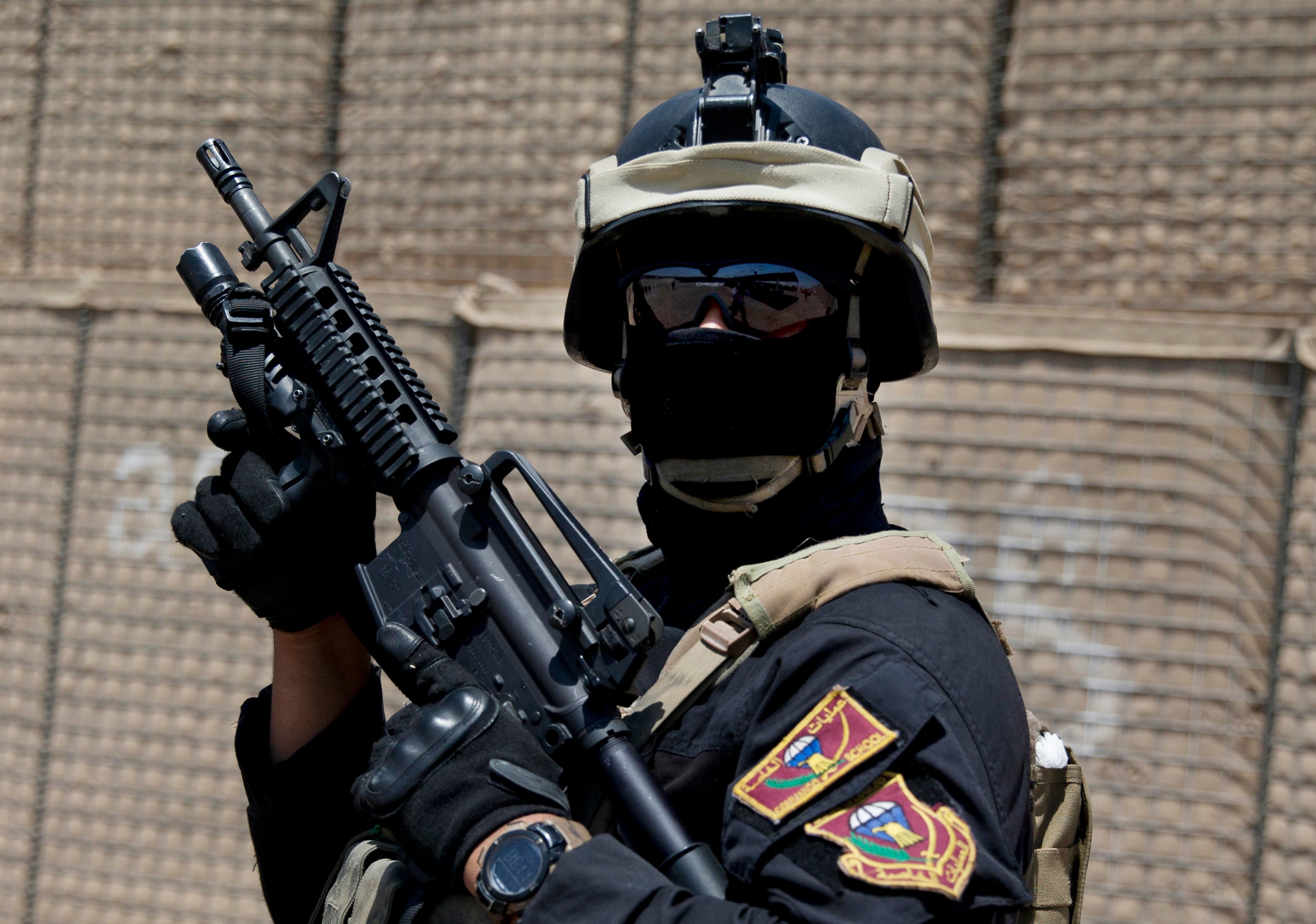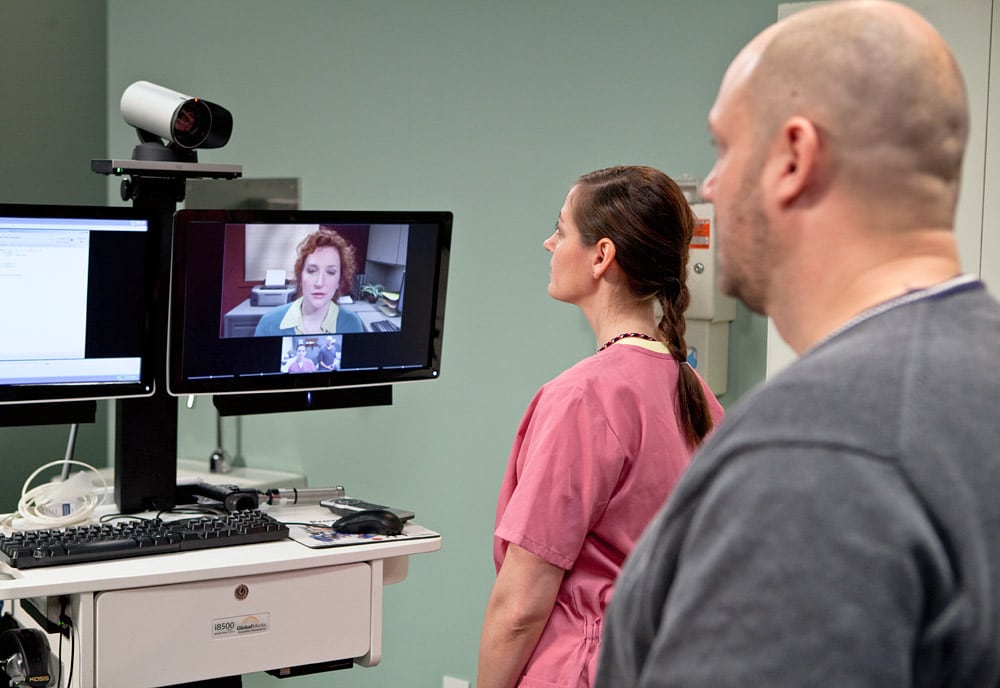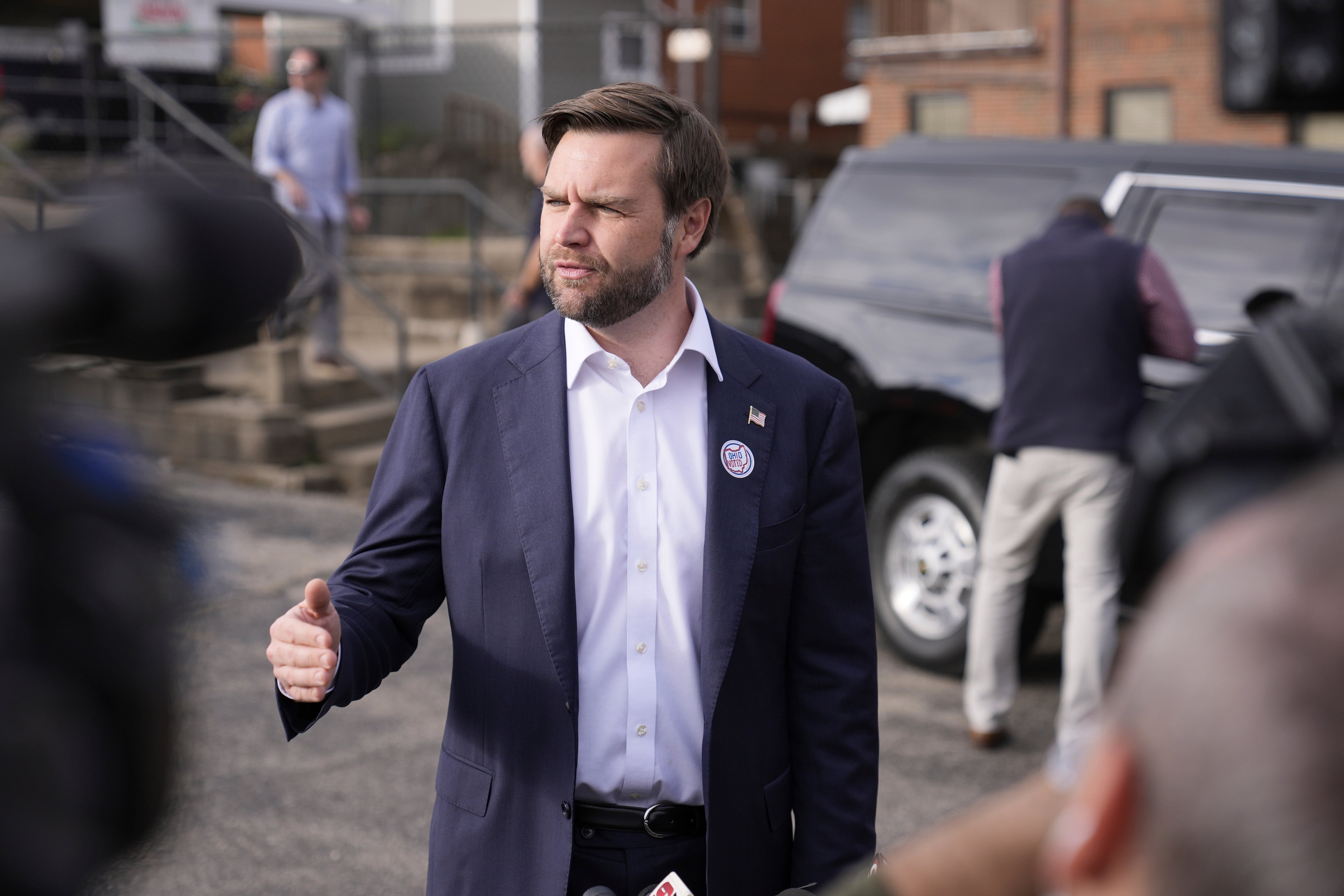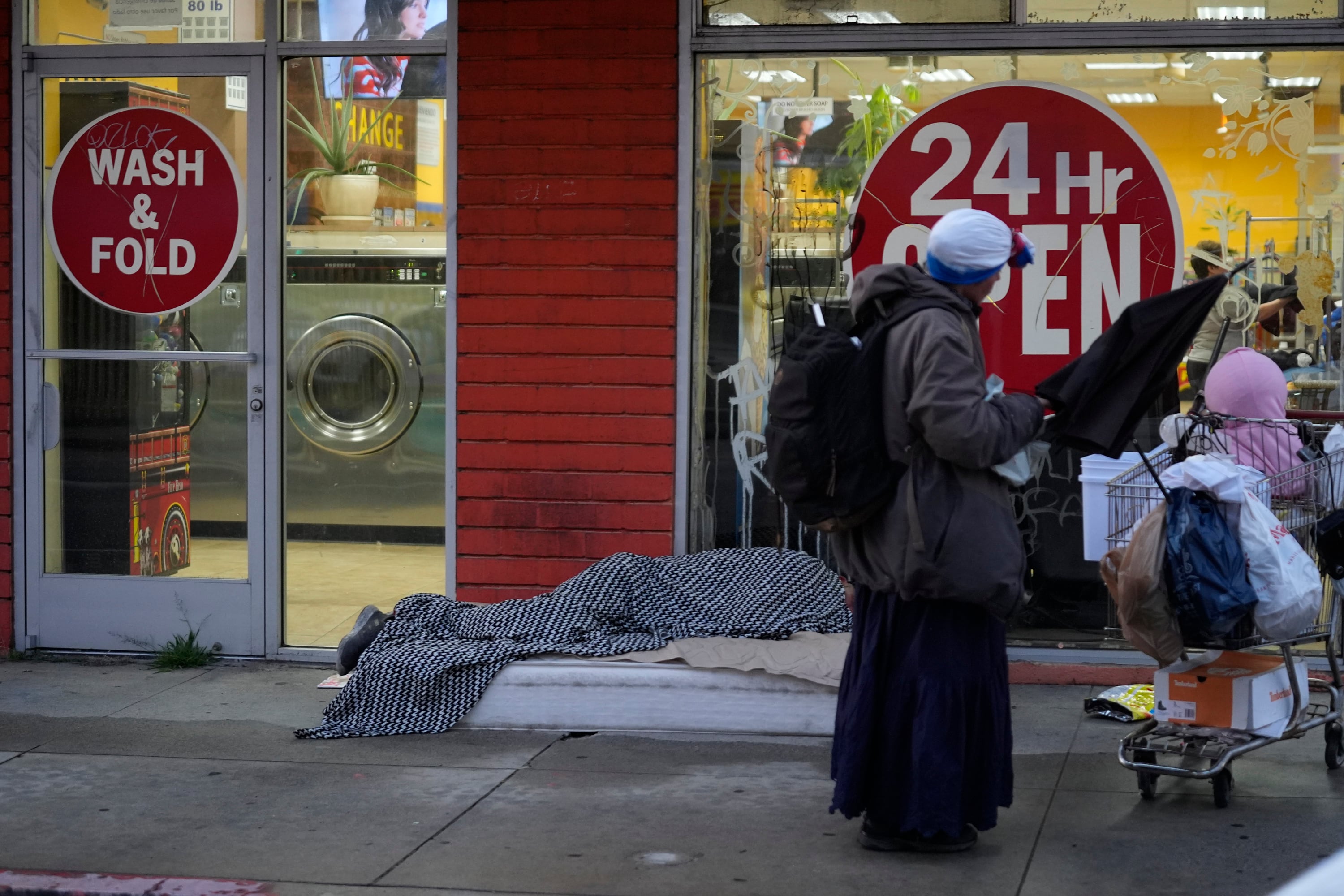An elite Iraqi force that just led a mission to retake an Islamic State group stronghold near the Syrian border now has its sights set on getting Fallujah back into the hands of the government wears some seriously intimidating black tactical uniforms — complete with skull masks. Mysterious Iraqi operatives in black uniforms and skull masks lead a recent OAF Nation post on the recapture of a remote desert outpost from the Islamic State group.
The commandos — part of Iraq's country’s elite Counter-Terrorism Service — is leading the charge to retake Fallujah, the first Iraqi city to fall to ISIS in January 2014. It was considered a devastating blow to the Iraqi government, and to the Marines who fought two of the Corps' bloodiest battles there during the 8-year war in the country.
The Counter-Terrorism Service, or CTS, stormed Fallujah on Sunday, backed by Iraqi soldiers and the national police, said Navy Capt. Jeff Davis, a Pentagon spokesman. About 1,500 members of the CTS were involved in the fight to retake the Iraqi city, along with about 10,000 local soldiers and roughly 8,000 members of the police force, CBS reported Monday.
About a week earlier
prior
, the CTS led the charge to wrest the strategic town of Rutbah from ISIS, Army Col. Steve Warren, spokesman for Operation Inherent Resolve, told reporters after that mission ended
in a follow-on briefing
. As federal police cordoned off the village, the CTS directly engaged ISIS fighters
as the primary clearance force, OIR public affairs elaborated in an email to Military Times
.
They were also involved in the fight to take back Ramadi.
"The Iraqi Counter-Terror Service, who are without any question, the most elite forces on this battlefield, are spearheading the operation," he said.
Here's what you need to know about these commandos' capabilities.
They have a unique chain of command.
The counter-terrorism service
CTS,
answers
able
directly to Iraq’s prime minister. The unit combines elements of the Iraqi army’s special operations forces — known as the "Golden Brigades" — with units of the interior ministry’s rapid-deployment force, a SWAT-like federal police branch
force
.
StratFor military analyst
Paul Floyd, a military analyst at the global intelligence consulting firm StratFor, told Military Times that the CTS is used as the point team in "every major military effort."
"They are by far the most competent [Iraqi] force," he said.
They were trained by American troops.
The U.S.
United States
military stood up and trained the independent, quasi-military task force prior to its official 2011 departure from the country.
Since 2007,
when the paramilitary force was first set up as the 'Counter Terrorism Bureau',
the U.S. has poured millions of dollars and untold man-hours training and equipping them, primarily by U.S. Special Operations forces, according to a Brookings Institute study.
CTS also worked side-by-side with U.S. special operators
American SOF
during the counterinsurgency slog, kicking in doors and scooping up bad guys in the dead of night.

The Iraqi Counter Terrorism Service force was trained by U.S. troops during the Iraq War. The group is now involved in the fight to retake major cities from the Islamic State group.
Photo Credit: Carolyn Kaster/AP
They wear some intense uniforms.
Members
of the The
y
commonly wear
s
black fatigues — and some don intimidating skull masks meant to incite fear in their enemies.
While the masks aren't typically issued to the individual fighter, Floyd said troops around the world are often drawn to them.
"It's generally because the individual soldier likes it or just wants to wear it," he said.
The force can also be
are
identified by the yellow and green patch worn on its members'
its members seen on the
right shoulders
in the picture
,
StratFor military analyst Paul
Floyd said
told Marine Corps Times
. They're also known to carry hand-me-downs from U.S. Special Operations forces, to include helmets, ear protection and weapons, he added.
They have a checkered past.
When the U.S. military left Iraq in 2011, the civilian-led forces like the CTS were used during some troubling missions
CTS fight against terror took a darker turn
under Iraq’s controversial former Prime Minister Nouri al
Al
-Maliki.
"From its very inception, CTS made many Iraqis and outsiders nervous," retired Army Col.
colonel
David Witty wrote in the 2015
a 2015
Brookings
Institute
study. "Because of its elite status, operational and intelligence capabilities, secrecy, and mission of quickly neutralizing specified individuals, CTS had a tremendous potential for misuse."
As sectarian divides deepened across Iraq, Maliki turned to his security forces to crush Sunni protests. In December 2013, for example, 17 civilians in Ramadi were killed when SWAT forces
for example, they
descended on a camp of hundreds of
3-400
protesters there
in Ramadi, and to disperse them. 17 civilians were killed
, according to Human Rights Watch.
With sectarian divisions ripping Iraq apart, Al-Maliki often deployed the Shi'a-dominated Rapid Deployment Force to brutally crush Sunni protests against his divisive policies, claiming the SWAT force was fighting terrorism.
In December 2013, for example, they descended on a camp of 3-400 protesters in Ramadi to disperse them. 17 civilians were killed, according to Human Rights Watch.
Those troubling events set the stage for ISIS to gain strongholds in the country, said
is opened the doors for ISIS to ' blitzkrieg through the country in 2014, recalled
Ali Muhammed Al-Thabhaw, a prominent Iraqi lawyer and civil rights activist.
"When the SWAT force used violence against the protesters, it planted the seeds of doubt [against the Iraqi government] for the people of Anbar province," he said. "In the city of Hit, for example, most of the people welcomed ISIS for this very reason."
Matthew L. Schehl covers training and education, recruiting, West Coast Marines, MARSOC, and operations in Europe, Africa and the Middle East for Marine Corps Times. He can be reached at mschehl@marinecorpstimes.com.
- US-trained and most capable to utilize Western assets providing support."
They commonly wear black fatigues and are identified by the patch seen on the right shoulder in the picture, StratFor military analyst Paul Floyd told Marine Corps Times.
"These guys are used as the point team in every major military effort," he said.
While federal police cordoned off the village, the Iraqi counter-terrorism troops CTS directly engaged ISIS as the primary clearance force, OIR public affairs elaborated in an email to Military Times. The liberation of Rutbah cleared the way to launch Sunday's offensive to retake Fallujah, the first Iraqi city taken by ISIS in January 2014 and the site of two of the Marine Corps' bloodiest battles during the eight-year war in the country.
The counter-terror unit is involved in that fight, too, as roughly 1,500 members of the elite unit Once again, a 1,500-strong CTS unit is leading the way into Fallujah, backed by 10,000 Iraqi soldiers and thousands more 8-10,000 national police, CBS reported Monday.
Once the Americans left, however, their fight against terror took a darker turn under Iraq's controversial Prime Minister Nouri Al-Maliki.
"From its very inception, CTS made many Iraqis and outsiders nervous," retired Army colonel David Witty wrote in a 2015 Brookings Institute study. "Because of its elite status, operational and intelligence capabilities, secrecy, and mission of quickly neutralizing specified individuals, CTS had a tremendous potential for misuse."
With sectarian divisions ripping Iraq apart, Al-Maliki often deployed the Shi'a-dominated Rapid Deployment Force to brutally crush Sunni protests against his divisive policies, claiming the SWAT force was fighting terrorism.
In December 2013, for example, they descended on a camp of 3-400 protesters in Ramadi to disperse them. 17 civilians were killed, according to Human Rights Watch.
This opened the doors for ISIS' blitzkrieg through the country in 2014, recalled Ali Muhammed Al-Thabhaw, a prominent Iraqi lawyer and civil rights activist.
"When the SWAT force used violence against the protesters, it planted the seeds of doubt [against the Iraqi government] for the people of Anbar province," he said. "In the city of Hit, for example, most of the people welcomed ISIS for this very reason.
With the tide turned against ISIS, the battle for a unified Iraq under Baghdad's control may just be beginning.





